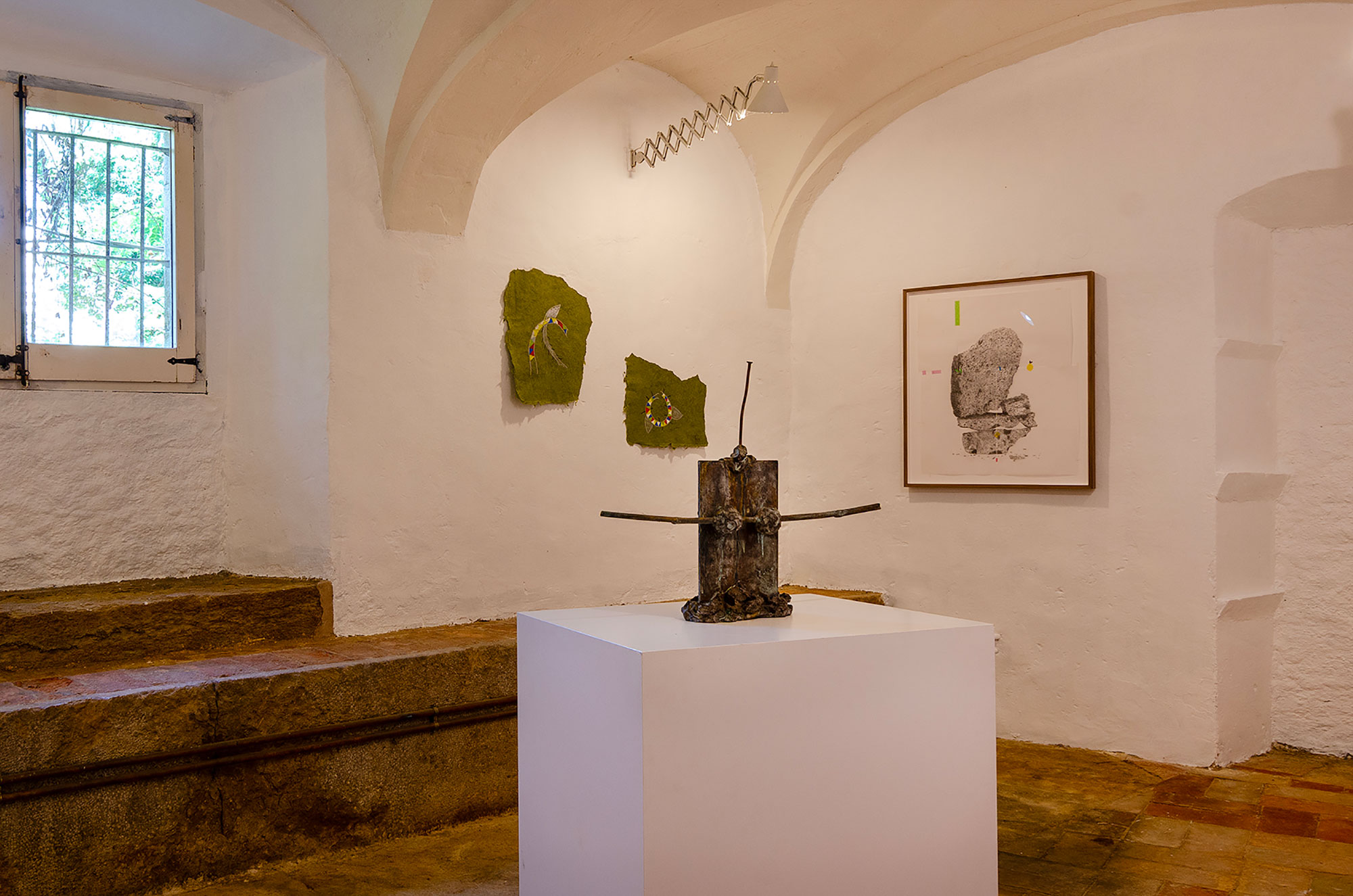24 June – 27 August 2023
Corça








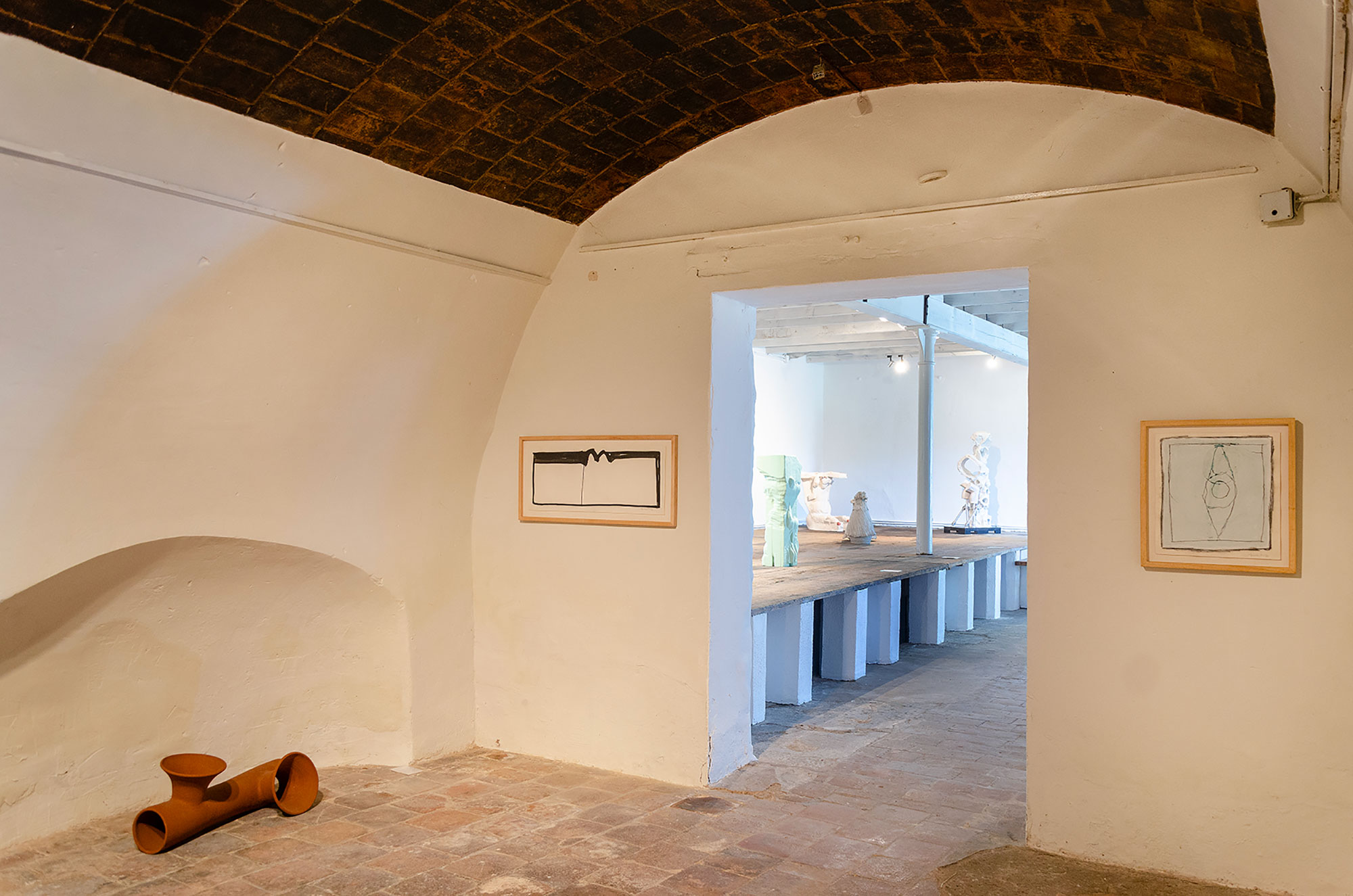
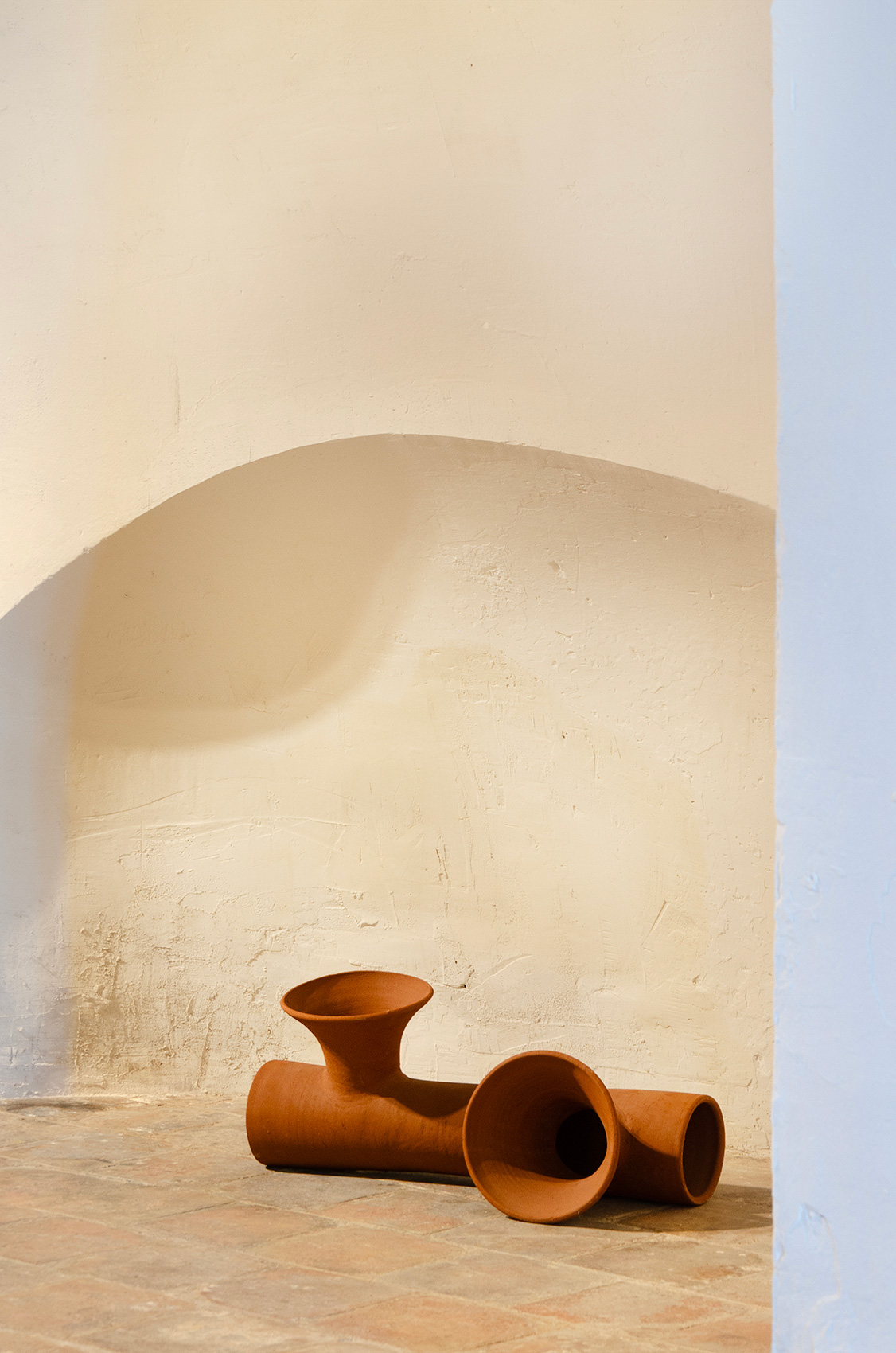
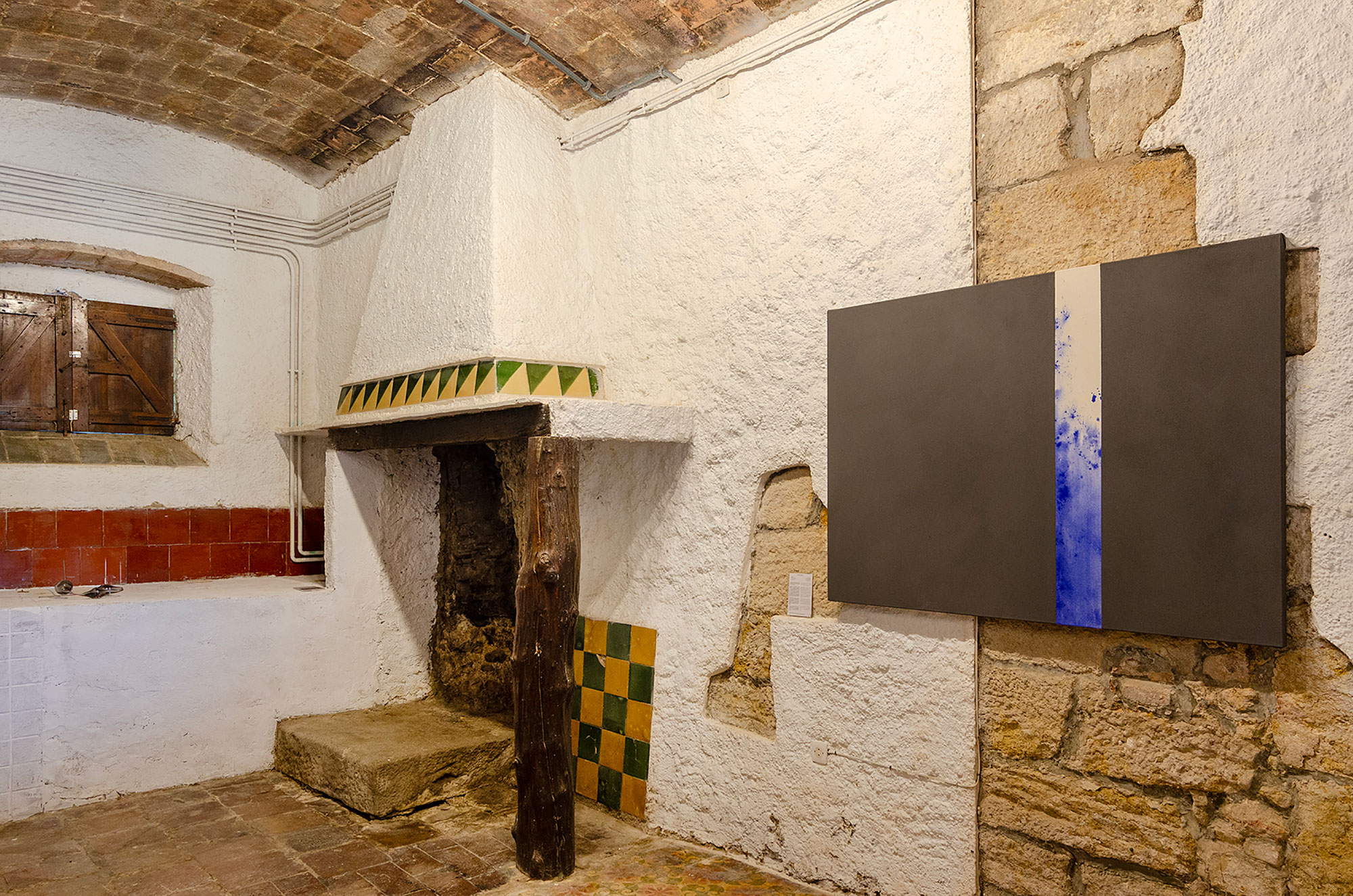
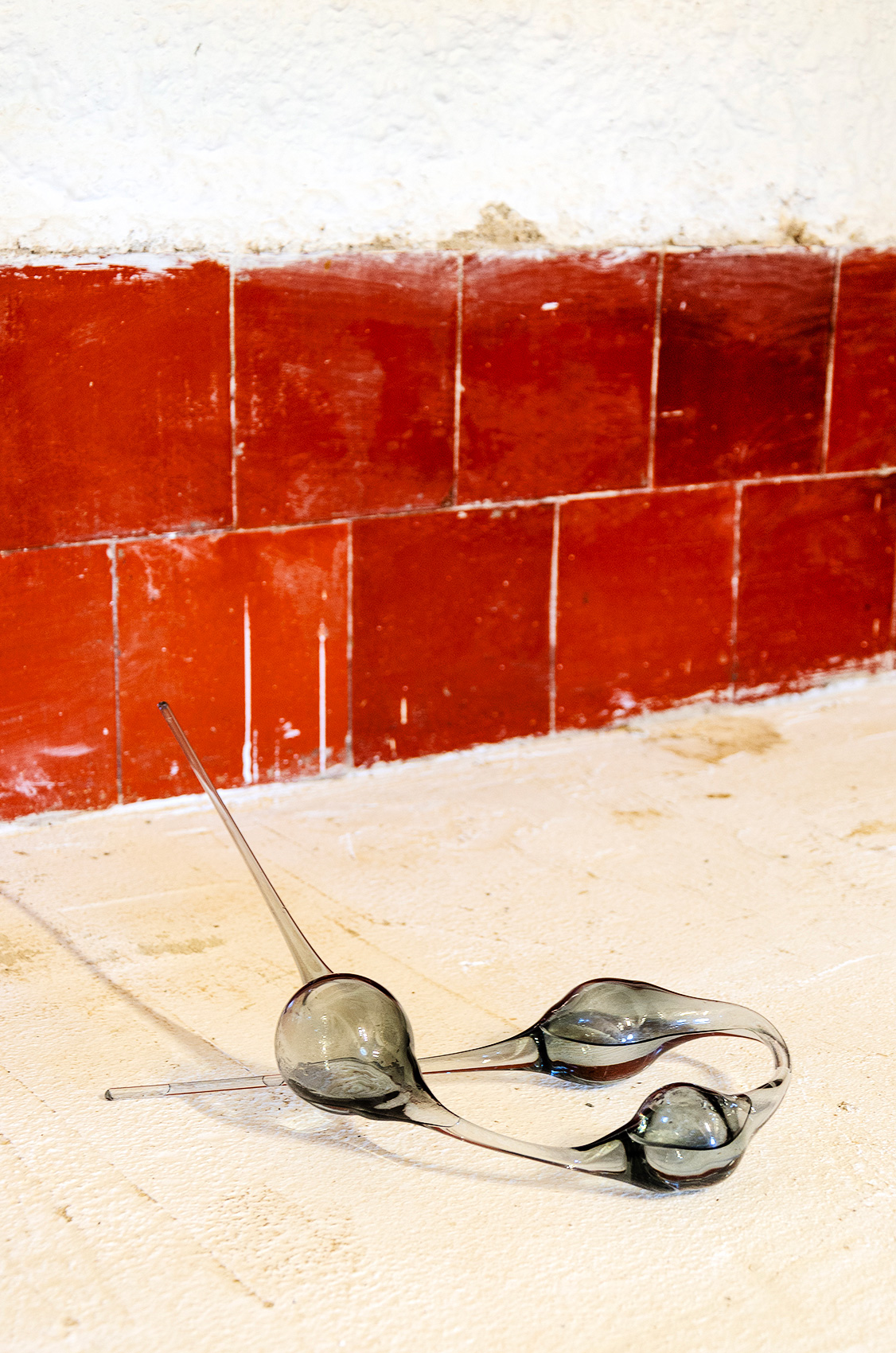

know more about
For the third consecutive year, we are delighted to announce a summer exhibition hosted by Bombon Projects, Joan Prats, and NoguerasBlanchard. Our collaborative project travels this year to a new space: l’Antiga Farinera, a former flour factory from 1822 built around a tower dated from the 12th century.
Located in Corçà, a medieval village in the region of Baix Empordà (Girona), l’Antiga Farinera will present an exhibition from the programs of the three galleries, together with guest artists from different generations connected to the region. The proposal will revolve around the concept of movement, and will be accompanied by parallel activities with artists and other cultural agents throughout the summer period.
MERIDIAN SPIRIT FANTASTIC
Text by Ángela Segovia
Forms that rise up and get on the move. I ask forgiveness as I set out to speak, perhaps unaccustomedly as an I, a person, and not a text. Not a name or a biography, but something intimate -a personal entity- that writes for you who read these lines, and moves towards you. I could almost state that, through this exchange we have known each other forever, because it is due to the effect of mutual conversion that we are here, around art, around this art. Forms that stand up and make their way. Simply. Forms that stand up or crawl or float or circulate through tubes and bulbs, forms that were there, and then were not, or suddenly are!… something that drops, a shadow. How is it possible that they are moving? And why would they move? And where are they heading?
It is still early to speak about it. We are still at the beginning. And at least at the start, I wanted to be clear and tell something. I wanted to speak about the meridian. Meridian is that which takes place in the middle. What happens for example in the middle of the day, at noon. What sails, for instance, the planet Earth from pole to pole. Meridian is intermediate, it traverses and returns. It holds a ritornello, namely, it returns to its original point, to the place where its trace originated, and to the moment when its trace originated. In other words, it’s a ring. But me, when I look at a ring, I see above all, a door. And all the magical rings from all the magical stories that inhabit the history of literature can only further support this idea; a ring as a door, an entrance, that perhaps in some other place, may also be a way out. Something to enter, to quit, to sail, to go across, to join ends, to create a space where to circulate, and that which circulates, again, creates a circle, I speak solely of one thing, movere, movere, meridian movement.
It is said that in the Middle Ages there was a demon that roamed castles and monasteries and caused indolence, a melancholic dull mood, a breakdown of the spirit that affected religious people. It was the unbearable proximity to the divine glow that sickened them, forcing them to find an emotional escape. However, it was the same tristitia (sadness) that later reconnected them back to God, closing a circle. It was called the Meridian Demon. Surely because it appeared at noon, but also due to the fact that this demon, like the rest of spiritual entities, according to medieval medical, philosophical and poetic knowledge, should enter the body through the pneuma.
Forms that rise up and get on the move, something animates them, they stand up and circulate, they open up a ring for us; let us leave a side for now the question about the origin of this movement, and its destiny. Its destiny is in any case, clear: conmovere, conmovere. Since we have entered through a meridian, through an open ring, surrounded by darkness, and perhaps in a certain narrowness we are led by these words of mine, let us return to the middle, to the middle ages. Enlightened by Aristotle and later by Plato, the idea of the pneumatic breath settled in medieval thought to explain the functioning of the senses, fantasy, imagination, divination, dreams, and many more affections of the body and soul. This fantastic spirit was the first vehicle of the soul, that embraced it in the higher celestial realms and then accompanied it in its way to the earth, to its body. The fantastic spirit was mainly a transient state in the full sense of it. It was not considered completely disembodied neither embodied, a type of subtle substance located between the body and the soul and that acted as a translator between both, divine and human.
Forms that rise up and make their way. That rise up from themselves and set off towards what they are not, and that by virtue of an alchemy that takes place inside of you, who are reading this and who will now walk among the shapes, which will return in ritornello to themselves, to the origin of that movement, and then will return to surround you again. Forms moved by something that is perhaps nothing more than “spirit” very subtly incarnated, forms whose movement will immediately move us, you and me, who thanks to these words are also in you, with you. So, very soon we will be able to recognise this movement within us, or maybe, we will not be able to distinguish ourselves entirely from the art that surrounds us. We will already be outside ourselves, towards and in something unknown that is perhaps the destiny we were expecting, a changing destiny, subtle, meridian, that transports us through small spasms, successive tremors.
Forms that emerge, that are propelled out of themselves, that circulate through our body, through our “spirit”; we who give ourselves to them and they who return to their empty heart, where the answears to the questions that fuelled their movement are nowhere to be found. According to many archaic and medieval theories the heart was the centre where the fantastic spirit stored the images that it carried with. The pneuma travelled in the arteries while the blood travelled in the veins, or else, the pneuma travelled above the blood as a tiny invisible layer. It entered through eyes and ears. It went out through the voice, or perhaps through the eyes if a trance provoked a vision. And the heart, pa pam, pumping by virtue of eros, emptied itself to lead the spirit towards the unattainable desire, filled itself to bring with it what was obtained in the quest, which was never that which was desired. Therefore, it emptied itself again.
Forms that move through spaces like air or paper or linen, forms in which we shift. Have you ever seen the leaves of a quaking poplar tree shake? I am referring to those poplars whose leaves are white on one side and dark on the other and when the wind moves them they oscillate, pa pam, creating a reflecting sensation. Our heart moves the same way. Thus, we think we see, only to realise that we see nothing, and it is this nothingness that again extends a vision, almost like a passing bird.
What I mean is, that it doesn’t matter much what we know now, nor what knowledge we gain later, on the way out. We will certainly return to the same void. Through this meridian we enter. That’s all. What do we sense? Ah, mere movement, fantastic spirit, it is easy to adapt to it, to move in it. It is so easy that it is not even necessary to think about it. So, all these words that you have read
crumble
separate
disperse
You forget them.
You are free to enter.
[1] All this is best described by the poet Paul Celan in his speech “The Meridian”, delivered on the occasion of the awarding of the George Büchner Prize.
Read More
